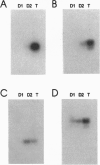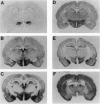Abstract
We applied the directional tag PCR subtractive hybridization method to construct a rat hypothalamic cDNA library from which cerebellar and hippocampal sequences had been depleted, enriching 20-30-fold for sequences expressed selectively in the hypothalamus. We studied a sample of 94 clones selected for enrichment in the subtracted library. These clones corresponded to 43 distinct mRNA species, about half of which were novel. Thirty-eight of these 43 mRNAs (corresponding to 85 of the clones in the sample) exhibited enrichment in the hypothalamus; 23 were highly enriched. In situ hybridization studies revealed that one novel species was restricted to cells in a small bilaterally symmetric area of the paraventricular hypothalamus. Other novel mRNAs showed substantial enrichment in basal diencephalic structures, particularly the hypothalamus, without restriction to single hypothalamic nuclei. The data suggest that the hypothalamus utilizes at least two distinct strategies for employing its selectively expressed proteins. Secretory neuropeptides utilized for intercellular communication are produced by functionally discrete nuclei, while several other proteins are shared by structures that are unrelated in their physiological roles but may share biochemical systems.
Full text
PDF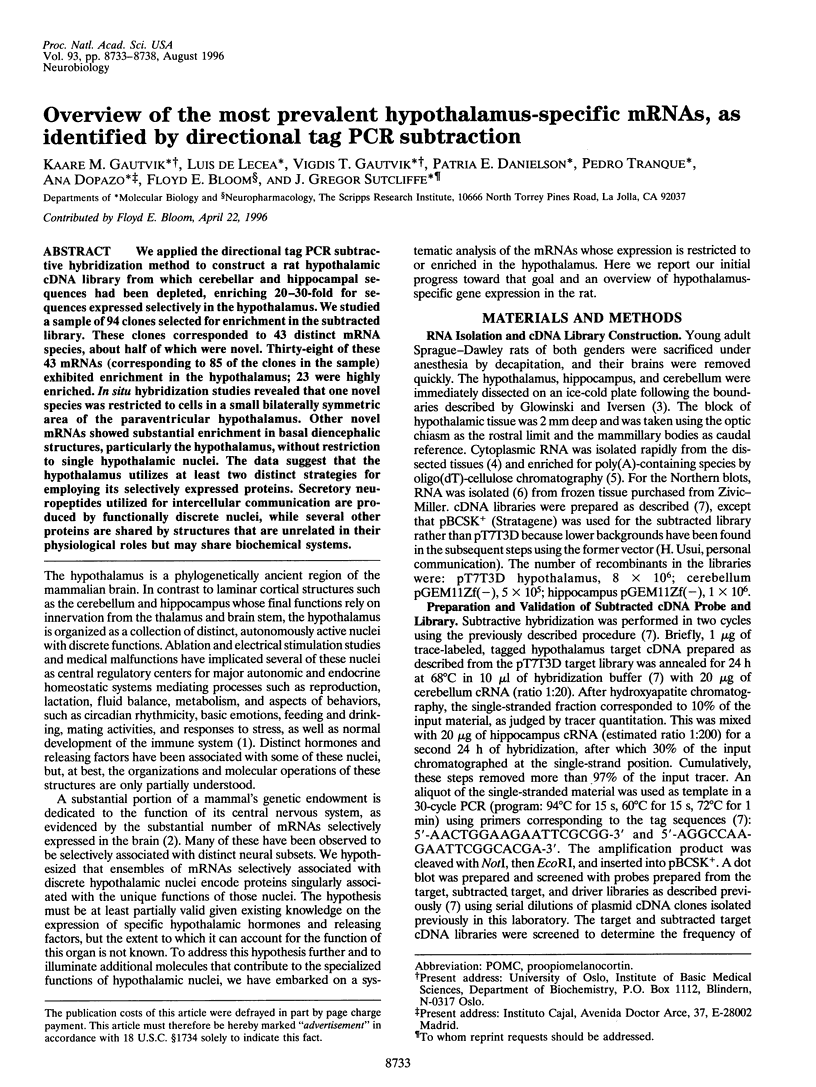
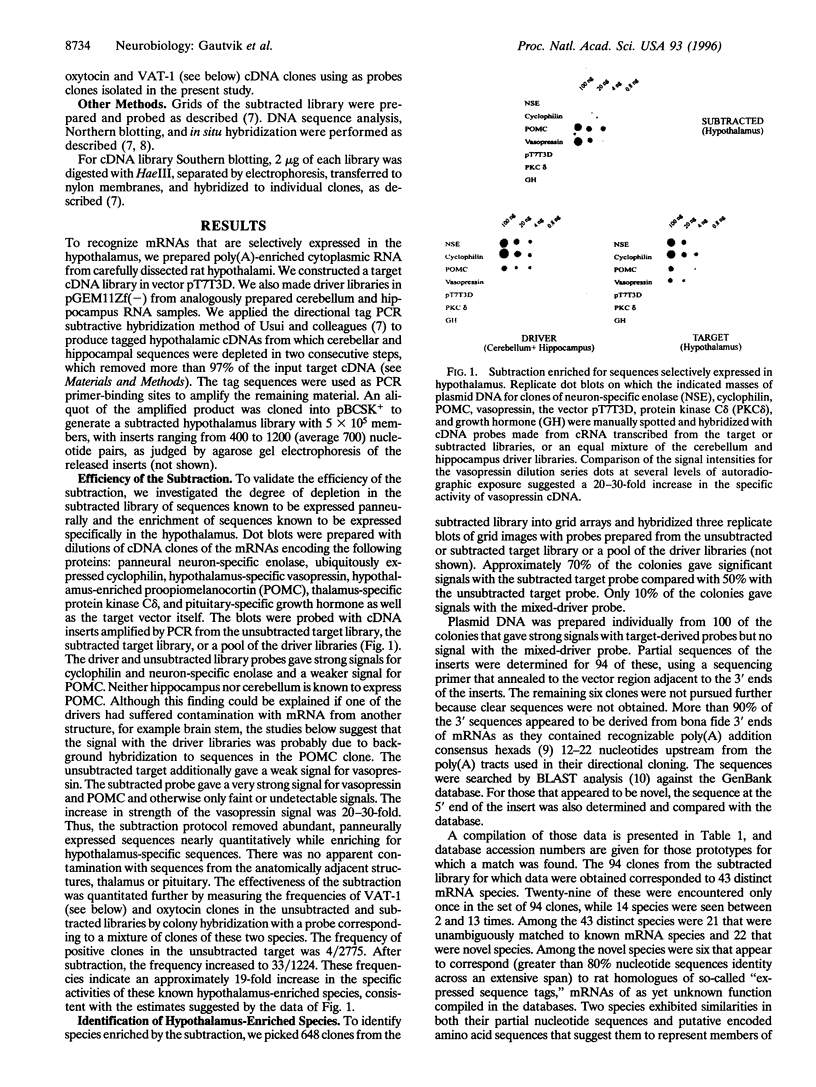
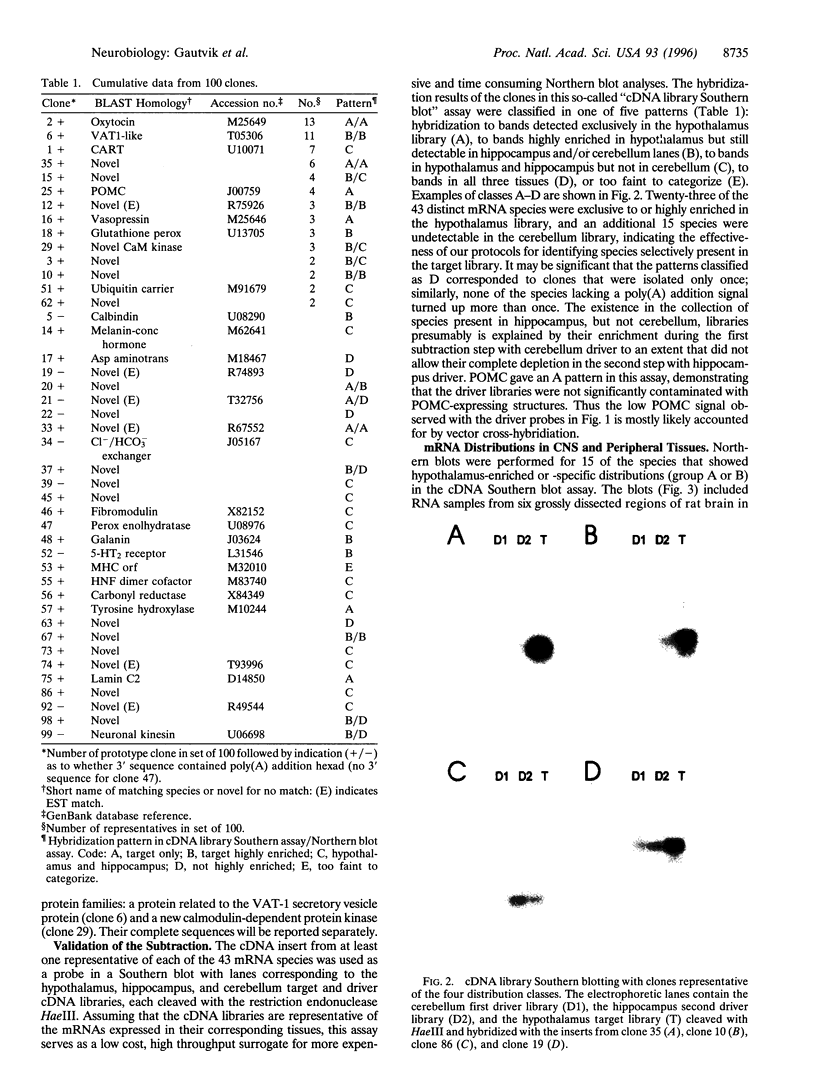
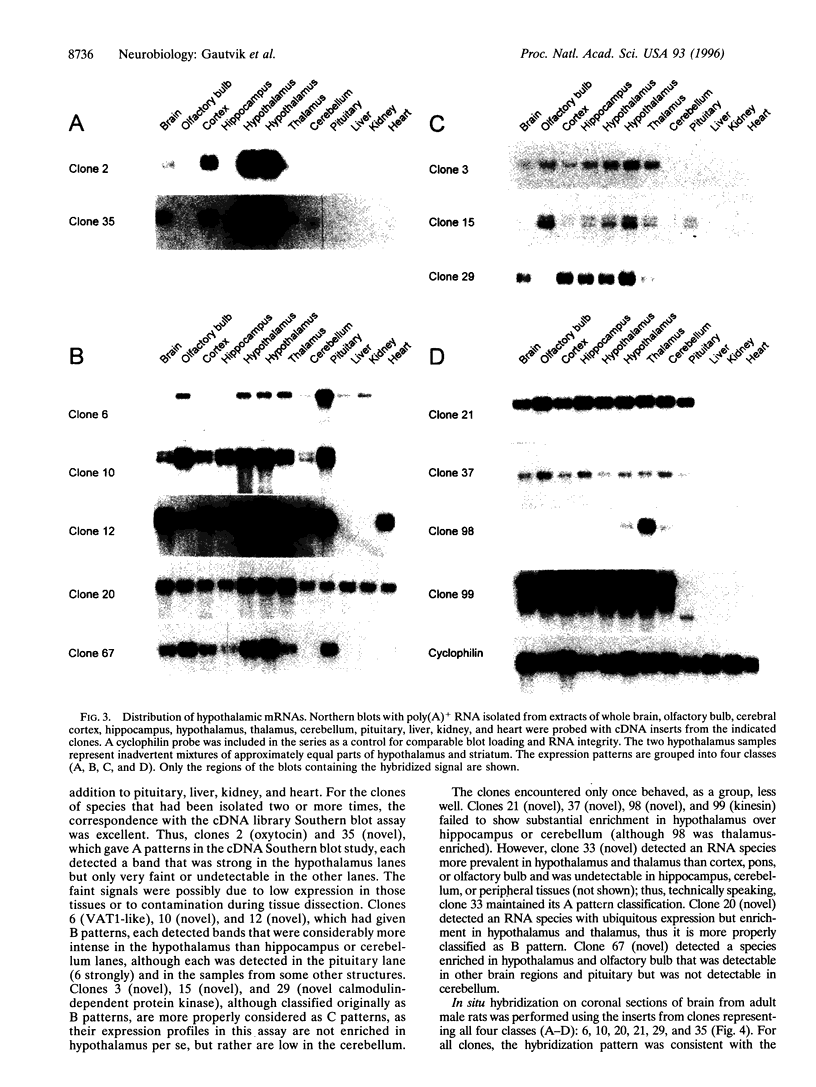
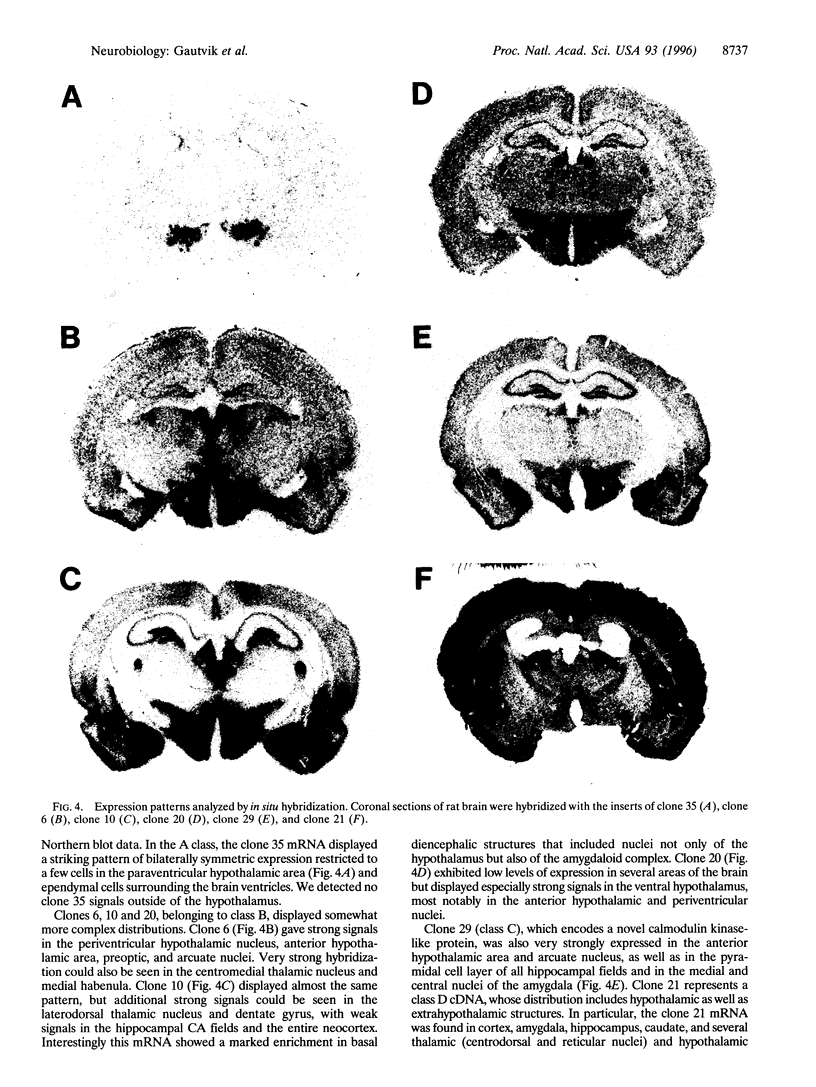
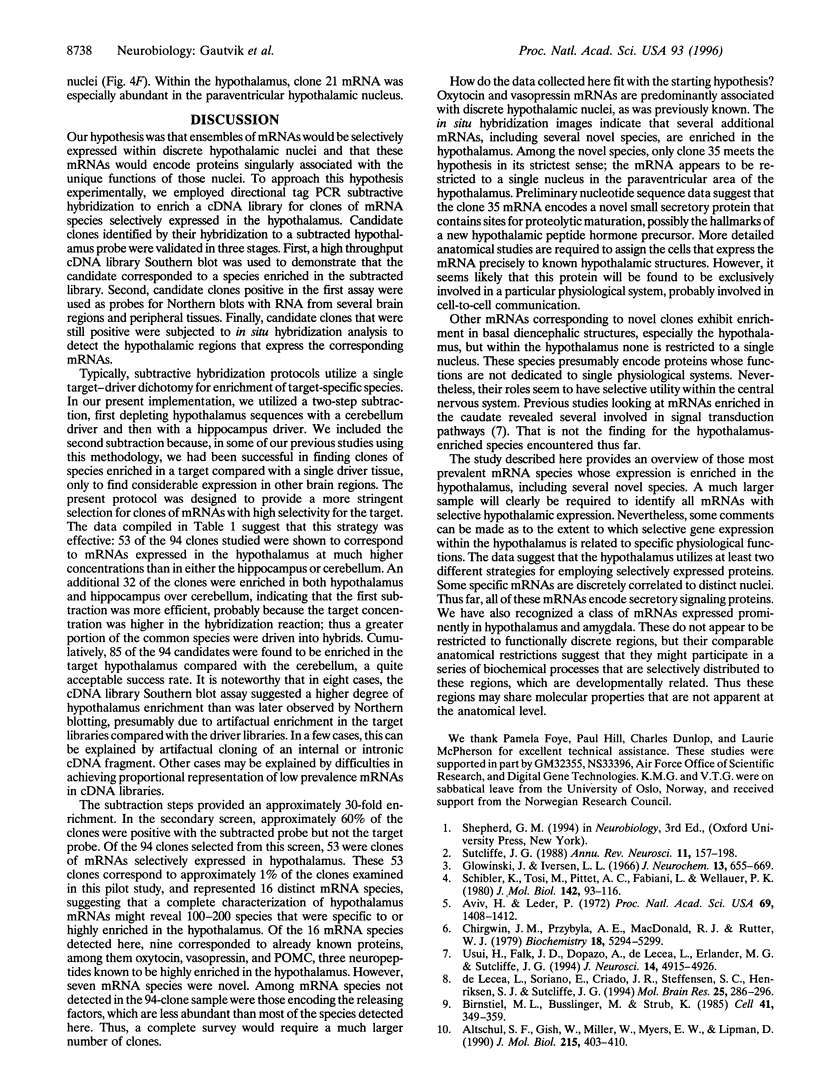
Images in this article
Selected References
These references are in PubMed. This may not be the complete list of references from this article.
- Altschul S. F., Gish W., Miller W., Myers E. W., Lipman D. J. Basic local alignment search tool. J Mol Biol. 1990 Oct 5;215(3):403–410. doi: 10.1016/S0022-2836(05)80360-2. [DOI] [PubMed] [Google Scholar]
- Aviv H., Leder P. Purification of biologically active globin messenger RNA by chromatography on oligothymidylic acid-cellulose. Proc Natl Acad Sci U S A. 1972 Jun;69(6):1408–1412. doi: 10.1073/pnas.69.6.1408. [DOI] [PMC free article] [PubMed] [Google Scholar]
- Birnstiel M. L., Busslinger M., Strub K. Transcription termination and 3' processing: the end is in site! Cell. 1985 Jun;41(2):349–359. doi: 10.1016/s0092-8674(85)80007-6. [DOI] [PubMed] [Google Scholar]
- Chirgwin J. M., Przybyla A. E., MacDonald R. J., Rutter W. J. Isolation of biologically active ribonucleic acid from sources enriched in ribonuclease. Biochemistry. 1979 Nov 27;18(24):5294–5299. doi: 10.1021/bi00591a005. [DOI] [PubMed] [Google Scholar]
- Glowinski J., Iversen L. L. Regional studies of catecholamines in the rat brain. I. The disposition of [3H]norepinephrine, [3H]dopamine and [3H]dopa in various regions of the brain. J Neurochem. 1966 Aug;13(8):655–669. doi: 10.1111/j.1471-4159.1966.tb09873.x. [DOI] [PubMed] [Google Scholar]
- Schibler U., Tosi M., Pittet A. C., Fabiani L., Wellauer P. K. Tissue-specific expression of mouse alpha-amylase genes. J Mol Biol. 1980 Sep 5;142(1):93–116. doi: 10.1016/0022-2836(80)90208-9. [DOI] [PubMed] [Google Scholar]
- Sutcliffe J. G. mRNA in the mammalian central nervous system. Annu Rev Neurosci. 1988;11:157–198. doi: 10.1146/annurev.ne.11.030188.001105. [DOI] [PubMed] [Google Scholar]
- Usui H., Falk J. D., Dopazo A., de Lecea L., Erlander M. G., Sutcliffe J. G. Isolation of clones of rat striatum-specific mRNAs by directional tag PCR subtraction. J Neurosci. 1994 Aug;14(8):4915–4926. doi: 10.1523/JNEUROSCI.14-08-04915.1994. [DOI] [PMC free article] [PubMed] [Google Scholar]
- de Lecea L., Soriano E., Criado J. R., Steffensen S. C., Henriksen S. J., Sutcliffe J. G. Transcripts encoding a neural membrane CD26 peptidase-like protein are stimulated by synaptic activity. Brain Res Mol Brain Res. 1994 Sep;25(3-4):286–296. doi: 10.1016/0169-328x(94)90164-3. [DOI] [PubMed] [Google Scholar]




